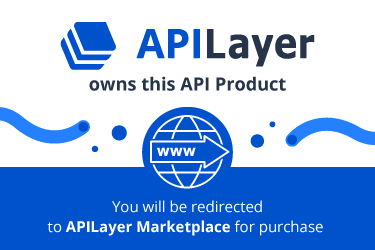Subscription Plans
Choose annual billing and save upto 15%.
Free PlanTry it for Free
$
0.00
/ yearly
API Requests Support Queries Encryption |
Basic PlanStandard Kit

Platinum Support
 Click for more information
Click for more information
API Requests Support Queries Queries Encryption |
Professional PlanBest Value

Platinum Support
 Click for more information
Click for more information
API Requests Support Queries Queries Encryption |
Enterprise PlanThe All-Inclusive Suite

Platinum Support
 Click for more information
Click for more information
API Requests Support Queries Queries Encryption |
Superior Functionality
Powered by AIOur detection algorithm is based on a system that improves continously with each detection performed. |
173 LanguagesAt the current stage the API is capable of identifying text in 173 different languages and accents. |
256-bit HTTPSEnsure secure and encrypted datastreams by connecting to the API via industry-standard HTTPS. |
Interactive DocumentationOnce signed up, you will be able to try out the API's features as you go through their Documentation. |
World-Class Tech SupportOur technical support team is great at giving you exactly the information that you need, when you need it. |
Extended Usage StatisticsTrack your API usage on a daily or monthly basis, and receive automatic notifications if you are running low. |
Frequently Asked Questions
API Functionality
How does languagelayer detection work?
How many (and which) languages are supported?
Does the API support GET and/or POST?
Does the API support batch (bulk) detection requests?
API Access
What is an API request?
What happens if I exceed my API Request volume?
What is the API's uptime?
Plans, Pricing & Payment
What is the difference between Free and Paid Subscriptions?
Which Subscription Plan fits my needs?
Which payment methods are supported?
Can I also pay yearly?
How do I cancel/downgrade?
How do I cancel/downgrade?
How do I change between monthly and yearly billing?
Platinum Support
What is included in Platinum Support?
How much does Platinum Support cost?
How do I select Platinum Support when purchasing a plan?
How does Platinum Support appear on my invoice?
Can existing customers upgrade to include Platinum Support?
How is the billing period for Platinum Support handled?
Can I opt out of Platinum Support during the purchase process?
Can I switch back to standard support after upgrading to Platinum Support?
See all Frequently Asked Questions »



